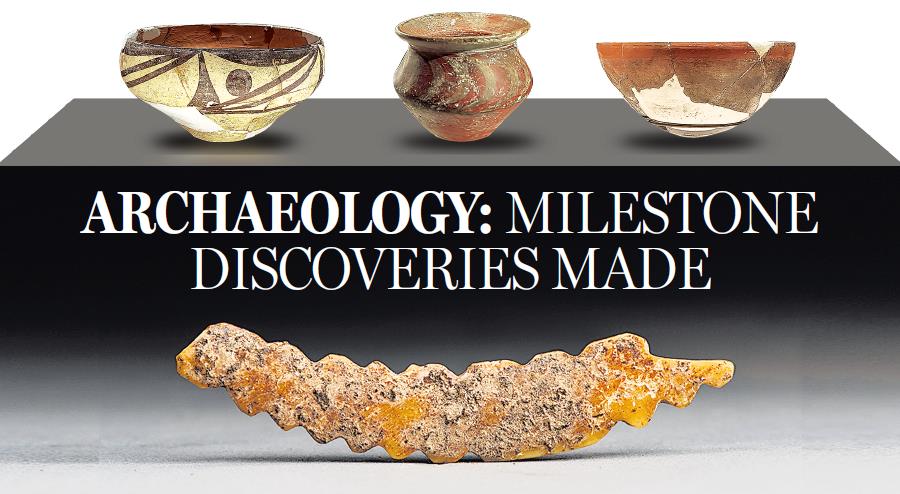
Top: Yangshao Culture painted pottery is displayed at the Miaodigou Yangshao Culture Museum in Sanmenxia, Henan province. Above: An ivory sculpture of a silkworm unearthed at the Shuanghuaishu site in Henan. [Photo/China Daily]
The third China Archaeological Congress was recently held in the city of Sanmenxia, central China's Henan province as the country celebrated the centennial of the establishment of modern Chinese archaeology. China's National Cultural Heritage Administration unveiled the country's top 100 archaeological discoveries in the past 100 years at the opening ceremony of the event.
近日,第三届中国考古学大会在河南省三门峡市开幕,“百年百大考古发现”名单也由此揭晓。
Two heritage sites from Guangdong made the list. They are the archaeological site of Nanyue Palace and the tomb of Zhao Mo, Nanyue King of Western Han Dynasty, situated in Guangzhou, and the Nanhai I shipwreck of the Southern Song Dynasty found off the coast of Yangjiang city.
广东共有两个项目入选:“广东广州南越国宫署遗址及南越王墓”以及“广东‘南海I号’沉船”。
The archaeological site of the Nanyue Palace bolsters Guangzhou's position as an ancient central city with a history of over 2,000 years. The greatest discoveries at the site include a large stone pool never seen before in the Lingnan region, and a winding stone brook representing the earliest and most well-preserved landscape of royal gardens in the Qin and Han dynasties.
南越国宫署遗址是广州历史文化名城地位的体现,其中南越国时期的大型石构水池在岭南地区尚属首见,曲流石渠遗迹是迄今为止发现的年代最早、保存较为完好的秦汉王家宫苑实例。
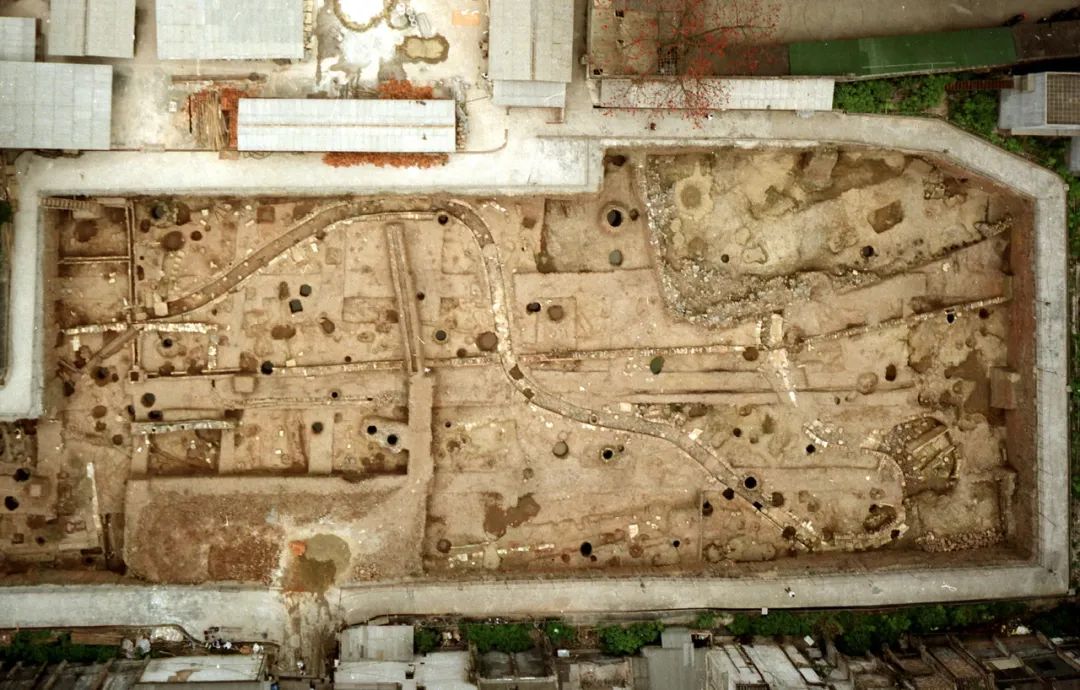
Ruins of the stone brook of the Nanyue Kingdom 南越国宫署曲流石渠遗迹
Located at the center of Guangzhou's historical downtown area, the site of the Nanyue Palace had served as the seat of administration in Guangzhou in different historical periods since the Qin Dynasty. It speaks to the role of Guangzhou as the political, economic and cultural center of the Lingnan region and witnessed how the Maritime Silk Road was formed, then developed and prospered in and around Guangzhou.
遗址位于广州市老城区中心,是秦统一岭南以来历代郡、县、州、府官署所在地,是广州作为岭南地区政治、经济、文化中心的证明,揭示了海上丝绸之路形成、发展和繁荣的过程。
The mausoleum of the Nanyue King was discovered in 1983 beneath a peak of Xianggangshan Hill and was confirmed to be the tomb of Zhao Mo, the second king of the Nanyue Kingdom (204-112BC) in the Western Han Dynasty.
南越王墓是南越国第二代王赵眜之墓,1983年在广州市越秀区象岗山被发现,是岭南地区规模最大、保存最好、出土器物最多的汉代彩绘石室墓,集中反映了两千多年前南越国的发展状况,见证了两千多前中国与海外的文化交流。
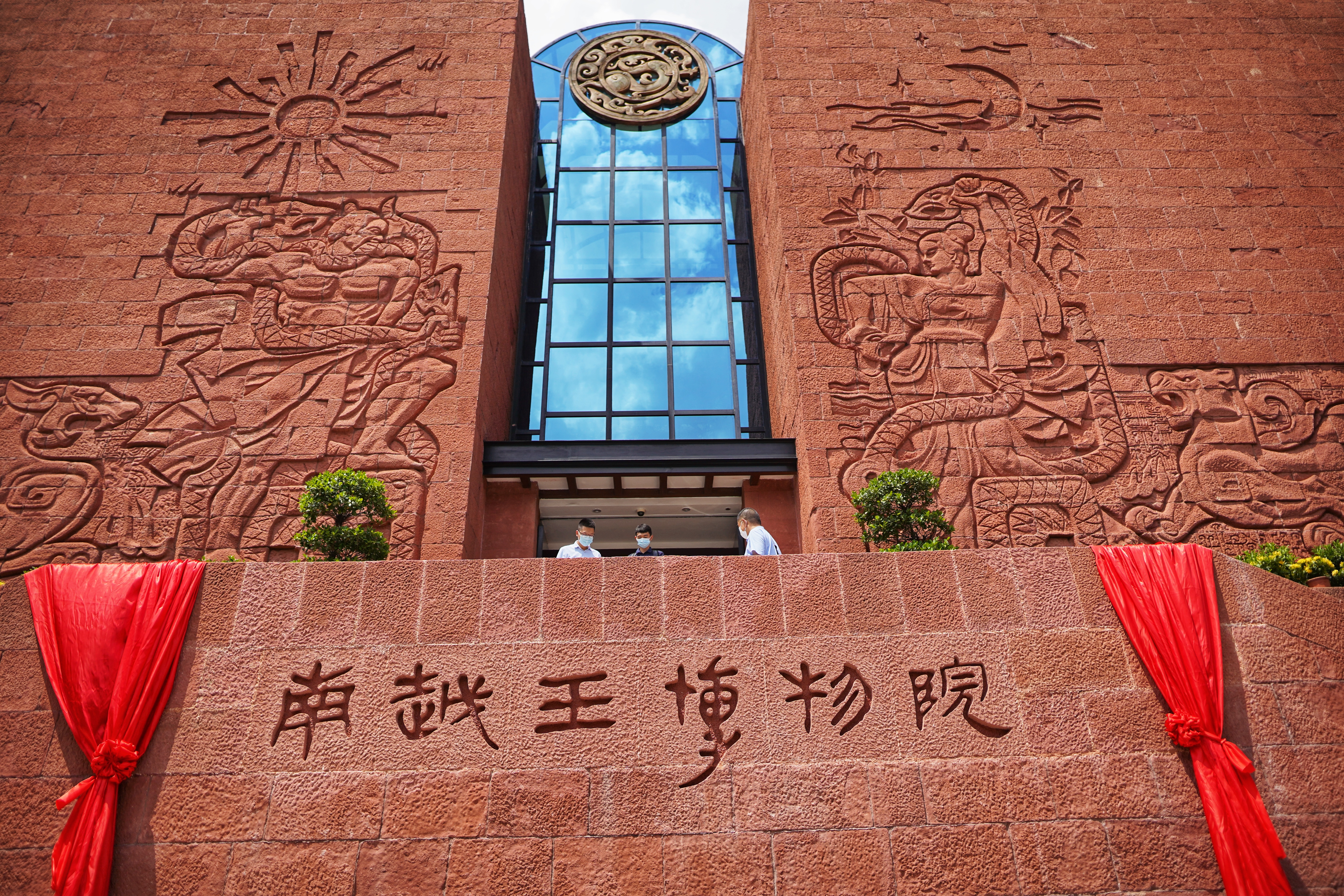
The Nanyue King Museum. 南越王博物院
In 2016, the mausoleum and the palace site of Nanyue Kingdom were included into China's first batch of historical sites along the ancient Maritime Silk Road ready to seek UNESCO World Heritage status.
2016年,南越王墓、南越国宫署遗址被国家文物局列入“海上丝绸之路·中国史迹”首批申遗遗产点之一。
The other project from Guangdong listed among China's greatest archaeological findings in the past century was the Nanhai I shipwreck. Discovered in the South China Sea in 1987 and salvaged in 2007, the shipwreck is now housed in the purpose-built Maritime Silk Road Museum of Guangdong in Yangjiang.
同样入选“百年百大考古项目”的广东“南海Ⅰ号”沉船则于1987年在广东阳江附近海域被发现,2007年打捞出水,并移入专门为之建造的广东海上丝绸之路博物馆内。
Video/Xinhua
As of 2019, more than 180,000 pieces (sets) of relics were retrieved from the wreck, most of which were porcelain and ironware, along with some metalware, bamboo and wooden lacquerware, glassware, human skeleton and animal remains.
直至2019年,“南海Ⅰ号”南宋沉船水下考古发掘项目圆满完成,船舱内货物已清理完毕,出水文物总数超过18万件,包括各类金、银、铜、铅、锡等金属器,竹木漆器,玻璃器以及人类骨骼、动植物遗存等,其中以瓷器、铁器为大宗。
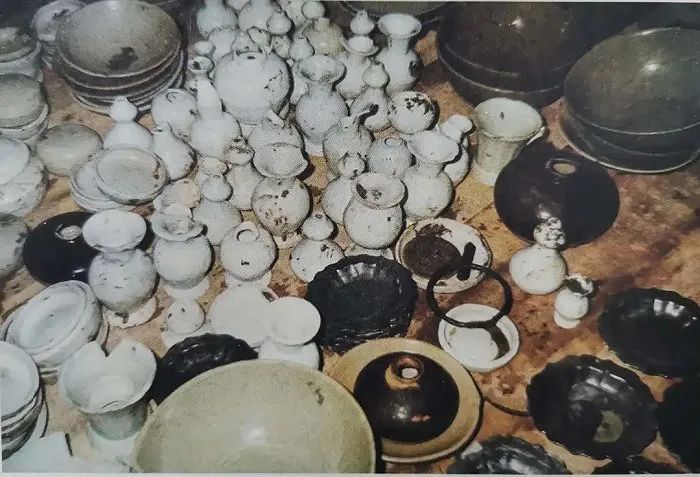
Some of the relics salvaged from the Nanhai I Shipwreck 从“南海I号”打捞出的部分文物
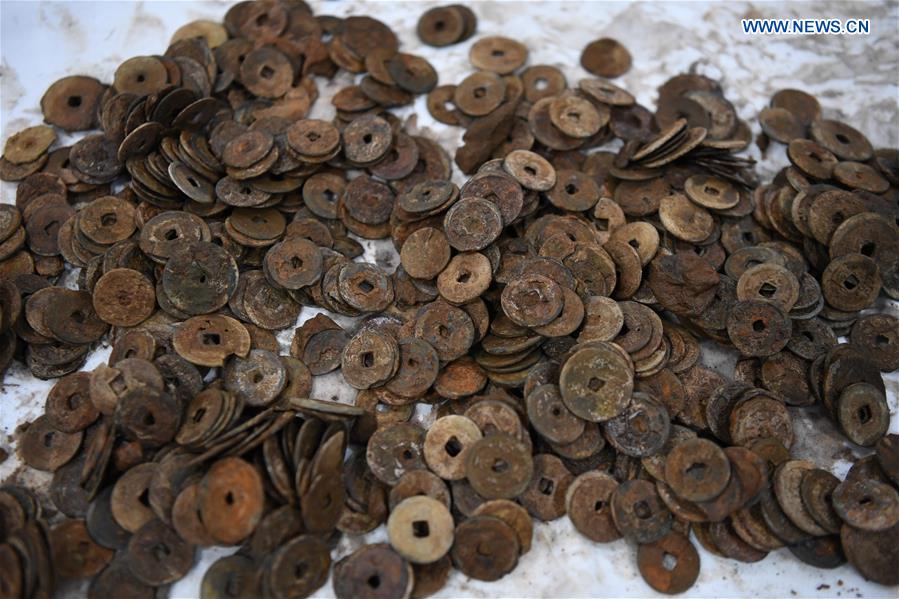
Photo taken on May 12, 2020 shows ancient coins found on the shipwreck of Nanhai No. 1 in Yangjiang, south China's Guangdong Province. (Photo/Xinhua)
The salvage and preservation work of Nanhai I Shipwreck epitomize the rapid development of China's underwater archaeology and set an example in underwater cultural heritage protection worldwide. In 2019, Nanhai I Shipwreck was listed among China's Top 10 Archaeological New Discoveries, the "Oscars of Chinese archaeology".
“南海I号”打捞、保护发掘工作是我国水下考古事业快速发展的缩影,堪称世界水下文化遗产保护的典范之作,获评2019年度全国十大考古新发现。
Author: Pauline, Liu Liu
Editor: Lv Yun
Sources: GZ-Maritimesilkroad (丝路云帆Silu Yunfan), official Wechat account of City Alliance for the Preservation and world Heritage Inscription of Maritime Silk Road Heritage
Courtesy: Guangzhou Municipal Bureau of Culture, Radio, Film and Tourism